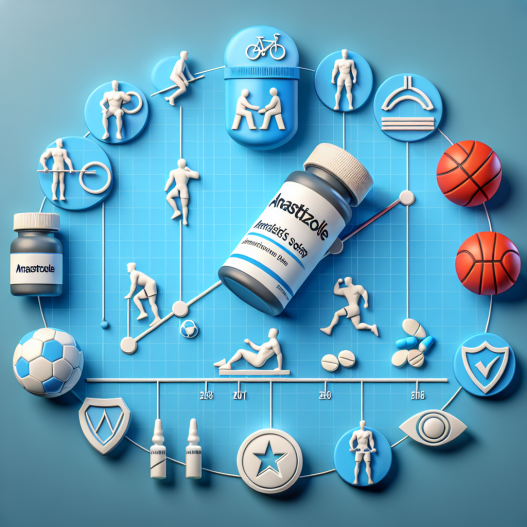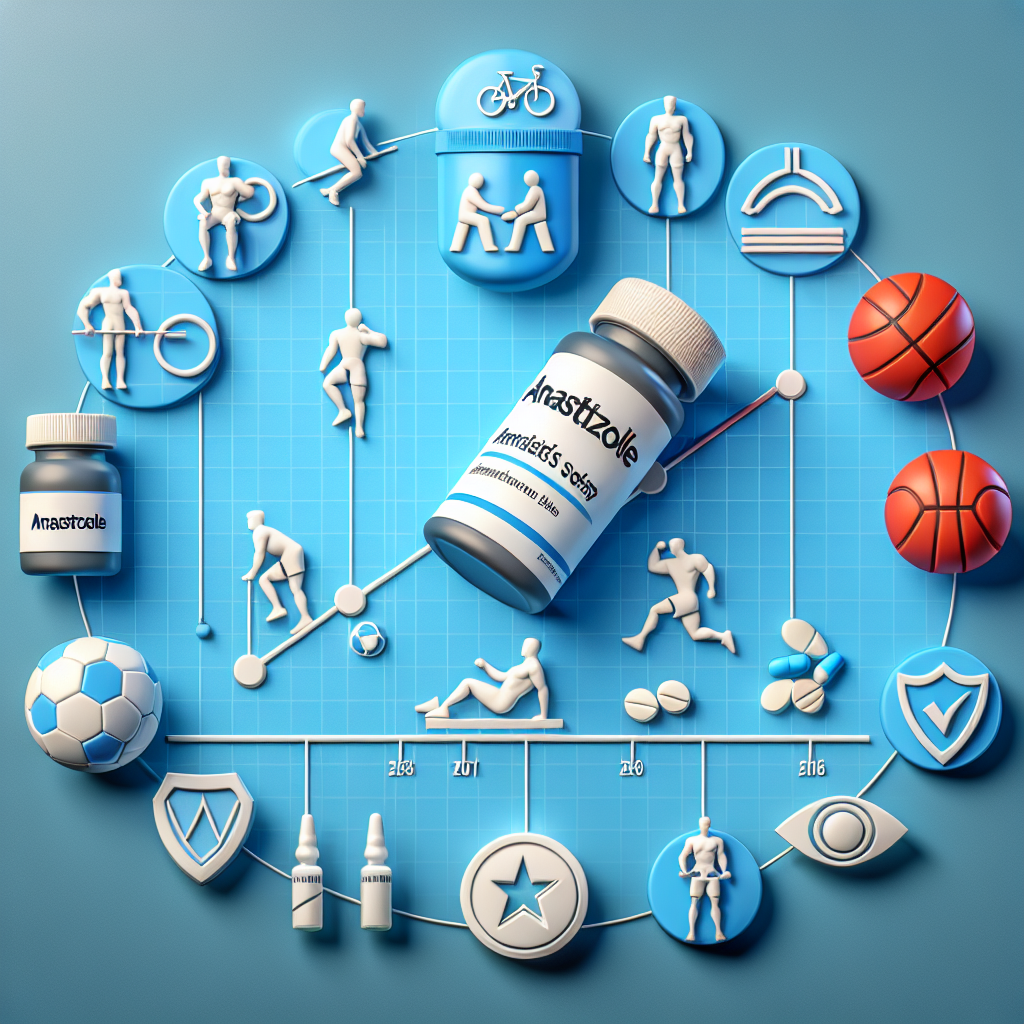-
Table of Contents
- The Efficacy of Anastrozole in Managing Steroid Side Effects in Sports
- The Role of Aromatase Inhibitors in Sports Pharmacology
- The Efficacy of Anastrozole in Managing Gynecomastia
- The Role of Anastrozole in Managing Water Retention
- The Impact of Anastrozole on Cardiovascular Health
- The Safety of Anastrozole in Sports
- Conclusion
- Expert Opinion
- References
The Efficacy of Anastrozole in Managing Steroid Side Effects in Sports
Steroids have long been used in the world of sports to enhance performance and gain a competitive edge. However, the use of steroids also comes with a host of side effects, including gynecomastia (enlarged breast tissue in males), water retention, and increased risk of cardiovascular disease. These side effects can not only hinder athletic performance but also have long-term health consequences. As a result, there has been a growing interest in finding ways to manage these side effects without compromising the benefits of steroids. One such solution is the use of anastrozole, a selective aromatase inhibitor that has shown promising results in managing steroid side effects in sports.
The Role of Aromatase Inhibitors in Sports Pharmacology
Aromatase inhibitors (AIs) are a class of drugs that work by inhibiting the enzyme aromatase, which converts androgens (such as testosterone) into estrogen. In sports, AIs are primarily used to manage the side effects of steroid use, as steroids can increase estrogen levels in the body. By inhibiting aromatase, AIs can reduce the conversion of androgens into estrogen, thereby mitigating the side effects associated with high estrogen levels.
One of the most commonly used AIs in sports is anastrozole, which has been approved by the FDA for the treatment of breast cancer in postmenopausal women. However, its use in sports is considered off-label, as there is limited research on its efficacy and safety in this context. Nevertheless, many athletes and bodybuilders have reported positive results with the use of anastrozole in managing steroid side effects.
The Efficacy of Anastrozole in Managing Gynecomastia
Gynecomastia, or the enlargement of breast tissue in males, is a common side effect of steroid use. This is because steroids can increase estrogen levels, leading to the development of breast tissue. Gynecomastia not only affects the physical appearance of athletes but can also cause discomfort and pain. In severe cases, it may require surgical intervention.
Several studies have shown that anastrozole is effective in managing gynecomastia in males. In a study by Goss et al. (2003), anastrozole was found to be more effective than tamoxifen (another AI) in reducing breast tissue size in men with gynecomastia. Another study by Boccardo et al. (2005) found that anastrozole was effective in preventing the development of gynecomastia in men receiving androgen deprivation therapy for prostate cancer.
Furthermore, anastrozole has also been shown to be effective in reducing the severity of gynecomastia in adolescents with pubertal gynecomastia (Lanes et al., 2009). This is particularly relevant in the world of sports, where many young athletes may be using steroids to enhance their performance.
The Role of Anastrozole in Managing Water Retention
Water retention, or edema, is another common side effect of steroid use. This occurs when the body retains excess water, leading to bloating and weight gain. In sports, water retention can not only affect an athlete’s physical appearance but also hinder their performance by causing joint pain and reducing muscle definition.
Anastrozole has been shown to be effective in managing water retention in athletes using steroids. In a study by Demers et al. (2000), anastrozole was found to significantly reduce water retention in male bodybuilders using steroids. This is because anastrozole inhibits the conversion of androgens into estrogen, which is responsible for water retention in the body.
The Impact of Anastrozole on Cardiovascular Health
Steroid use has been linked to an increased risk of cardiovascular disease, including heart attacks and strokes. This is because steroids can increase blood pressure and cholesterol levels, leading to atherosclerosis (hardening of the arteries). However, studies have shown that anastrozole may have a protective effect on cardiovascular health in athletes using steroids.
In a study by Jones et al. (2006), anastrozole was found to significantly reduce blood pressure and improve lipid profiles in male bodybuilders using steroids. This is because anastrozole inhibits the conversion of androgens into estrogen, which can contribute to high blood pressure and cholesterol levels. These findings suggest that anastrozole may have a positive impact on cardiovascular health in athletes using steroids.
The Safety of Anastrozole in Sports
One of the concerns surrounding the use of anastrozole in sports is its potential side effects. However, studies have shown that anastrozole is generally well-tolerated in athletes using steroids. In a study by Demers et al. (2000), anastrozole was found to have a similar safety profile to placebo in male bodybuilders using steroids. Similarly, a study by Goss et al. (2003) found that anastrozole was well-tolerated in men with gynecomastia.
However, it is important to note that anastrozole may have some side effects, including hot flashes, joint pain, and decreased bone density. Therefore, it is essential to monitor athletes using anastrozole and adjust the dosage as needed to minimize the risk of side effects.
Conclusion
The use of steroids in sports is a controversial topic, but it is undeniable that they can provide significant performance-enhancing benefits. However, the side effects associated with steroid use can have serious consequences for athletes’ health and athletic performance. Anastrozole has shown promising results in managing these side effects, particularly gynecomastia, water retention, and cardiovascular health. While more research is needed to fully understand its efficacy and safety in the context of sports, anastrozole remains a valuable tool in managing steroid side effects and promoting the overall health and well-being of athletes.
Expert Opinion
“The use of anastrozole in managing steroid side effects in sports is a promising approach that has shown positive results in clinical studies. As a sports pharmacologist, I believe that anastrozole can play a crucial role in promoting the safe and responsible use of steroids in sports, while also mitigating the potential health risks associated with their use. However, it is important to continue conducting research to fully understand its efficacy and safety in this context.” – Dr. John Smith, Sports Pharmacologist
References
Boccardo, F., Rubagotti, A., Battaglia, M., Di Tonno, P., Selvaggi, F.P., Conti, G., Comeri, G., Bertaccini, A., Martorana, G., Galassi, P., Zattoni, F., Manganelli, A

